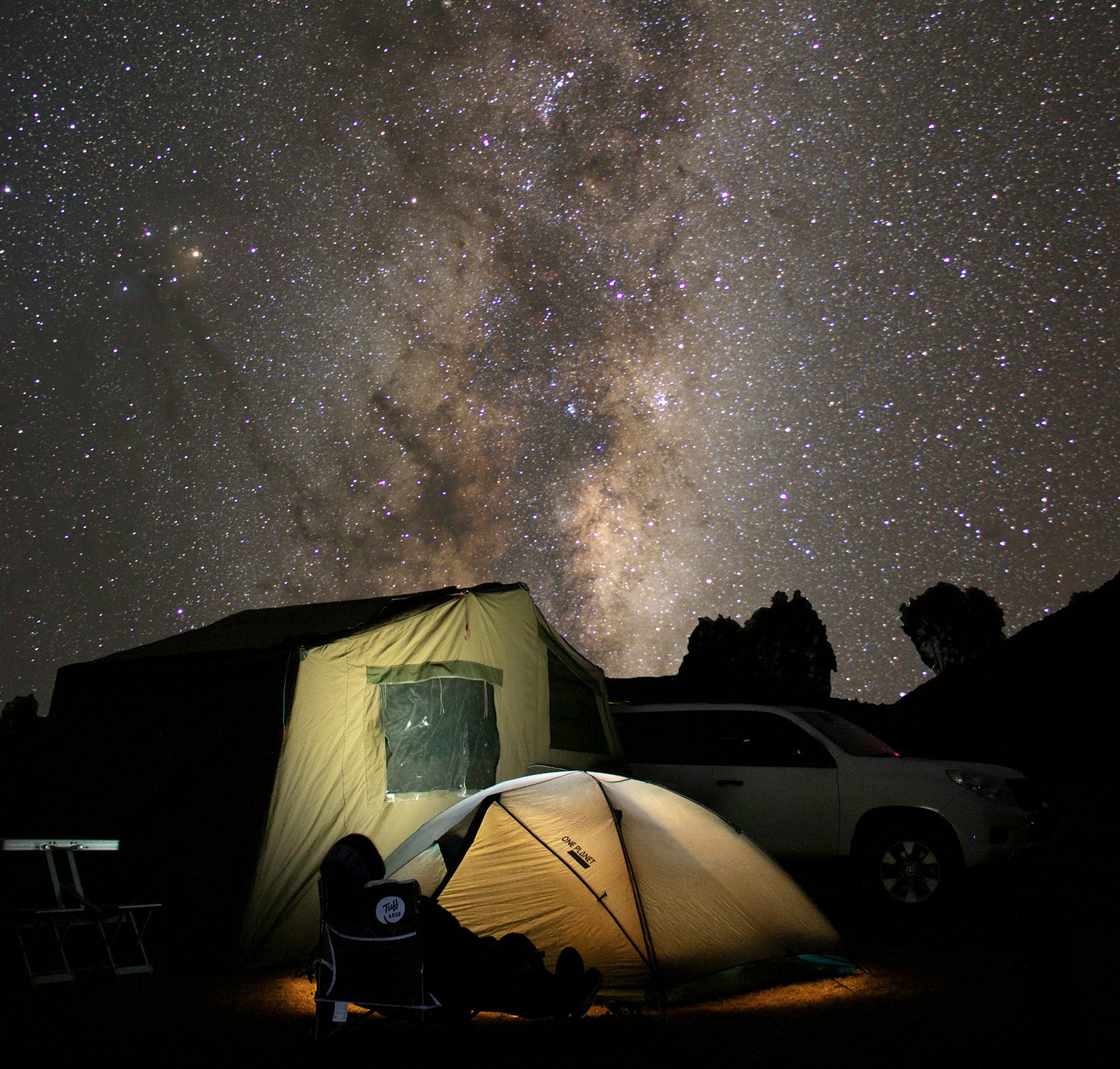The Universe and all things in it have long held the fascination of mankind (well at least since we stopped believing the world was flat). On the subject, a while back we featured Tuff Arse customer and self styled ‘Space Nerd’ Monty McNeilly on our socials with some of his night sky photography; the post went viral and attracted a heap of interest! So we thought, what’s up with the sky? We thought we’d follow up with Monty and speak with him in more depth to find out and try and get behind what it is about peering into infinity (or not infinity?) that so holds our fascination. For context, Monty is 15 years old and is currently doing year nine at high school, having taking up astronomy and night sky photography only a year or so ago. In that time he has developed an understanding and perspective on our place in the universe that far exceeds most adults' (just ask a few of your friends how many planets there are in the solar system and you’ll get an idea). So we sat down with Monty and chatted about all things vast and night sky related. Read on...

Tuff Arse: What got you into star gazing / astronomy and how long have you been doing it?
Monty: I only started about year ago last summer when I got an old telescope from Grandpa and it's kind of taken off from there.
TA: What equipment do you use?
M: I started with the old telescope from Grandpa, just looking at the moon from out in the backyard at our home in Barwon Heads (Vic). Even though the telescope was pretty low powered this was enough to really get me into it. Then soon after, I invested some Christmas money into a bigger telescope that got me deeper into the sky and enabled me to see proper planets. I could clearly see Saturn and its rings and Jupiter and its cloud belts. Since then, I’ve purchased an even bigger third one which is almost double the size again (I got it on MarketPlace for only $350, they are $800-900 new!)
This latest scope enables me to go even deeper and see even more detail in the planets, stars and galaxies, looking at gases and nebula in the night sky (Nebula are colourful accumulations of gases in space that starlight reflects off). I use this telescope to take my photos with, by using an adaptor which connects my DSLR camera to the eye piece.
I also have just a camera lense that I use with a 'star tracker’ which moves with the rotation of the Earth to keep the subject star in training and focus. I've had this latest gadget for the last few months and it has really helped improve the quality of my photos and has really got me into the hobby with some cool results. Taking images of the night sky is what interests me the most!
Using the star tracker has taken me from ‘visual astronomy' into the high end photography aspect, it's really the only way you can achieve good results with night sky images. I’m now saving up for an ‘Equatorial Mount’ which basically does the same thing but is a more heavy duty version and is used in combination with the telescope to go even further with focal length; a typical camera lense is 135mm, but connecting to the telescope takes me up to a focal length of 1000mm plus, enabling looking at other galaxies in detail that are beyond our own Milky Way. It’s pretty exciting!
TA: Just on that Monty, how come we can see our own Milky Way if we are a part of it?
M: Ok, basically we don't see the full Milky Way, essentially we’re looking at the centre of it. Think of it as a ‘plate’ and we’re on the outside edge of that plate looking back into the middle of it, on the plane. What we see as the ‘milkyness' is the gases that the starlight reflects on. (Ed: Ok it's a stupid question, but haven’t you ever wondered, How is a 15 year old kid able to explain it so beautifully and eloquently?)
TA: Is it all about star signs and fortune telling?
M: Star signs and Astrology don't mean that much to me, they are more old school and about fortune telling, mythology and that kind of stuff. I'm not really into it. Astrology and Astronomy are two different things. Astronomy which is the study of stars and the universe I'm into. The Crux (Southern Cross) is probably the most recognised constellation in our sky. 'Centaurus’ constellation is the closest star system to Earth and the brightest, it has heaps of stuff and star clusters that I love to photograph.
TA: What's your favourite planet in our own solar system? Is Pluto even a planet?
M: That's a tough one! It’s definitely between Jupiter and Saturn but I’d have to say Saturn. I love it the most, with its rings it is such an incredible planet. Pluto (the former 9th planet of the solar system) was declassified as a planet in about 2001, although a lot people still believe it is in fact a planet. The actual definition is nothing to do with the size, it uses odd algorithms and is a weird definition.
TA: Can a camper use stars to navigate? Is it hard?
M: Yes you can, once mastered it's not that hard. Simplest way is to find the Southern Cross which is a good way to ground your navigation. By using the pointer stars to create a perpendicular line you can locate south, however it’s not as simple as it sounds, you need to be looking at the Southern Cross to explain it.
TA: Where is the best place to stargaze in Aust / your favourite spot?
M: For me it's just anyhere where there is the least amount of light pollution, out in the remote bush is great.
TA: Do city lights have much of a negative impact ?
M: Yes they do have a massive negative impact. Light pollution is very significant in all metropolitan areas. If you’re looking up at the night sky in suburban Melbourne you’ll see less than half the stars on offer. In cities the sky is never completely black, it's like being in constant dawn or dusk, with limited visibility. Where I live in Barwon Heads on the Victorian coast, it’s still populated but with not that many people, so it's much clearer. And because we are next to the ocean this helps as there's no light polluition over the water, so the southern views are excellent. One thing though, even if you do live in the city the solar system planets are not effected by light pollution, because they are so bright themselves and they are so close. So you can still get great photos of them including Jupiter and Saturn.
TA: What is the best way for someone to get started in Astronomy?
M: Just buy a cheap telescope for around $100 bucks (second hand ones are the best way to go) and start with the moon, then advance form there. The bigger the mirror or lense on the telescope, the more detail you’ll see. Also, different times of year give different views. In Spring it's pretty boring apart from our own planets, in Winter the Milky Way is the best and Summer is great for targets like Orion and other interesting stuff.
TA: Finally... what's the most comfortable way to look at stars Monty?
M: Haha... the Tuff Arse Low Ryder for sure! ‘Caus I can almost lie down and easlly keep my head up, and it's super comfy! On my Winter trip to NSW this year, with no light polluted skys, I literally sat in it for over an hour just looking up at the Milky Way, it was one of the most amazing things I've ever done.
To follow Monty head over to his Insta pg at @montymcneilly










TBH I’ve educated myself a few new things from this post. Never know how beautiful our solar system looks like.
Wow Monty, great shots! And I think it’s so awesome you’ve found something that you’re passionate about so young. Good for you! Something interesting… my Dad can meet someone and know their star sign within about half an hour! Not the rubbish horoscopes you see in magazines etc but actual astrology is really insightful and cool! Keep enjoying your star gazing!
He’s my boy too. Gets all his intellect from me! Love the tuff arse chair. Super comfy and really tuff!
That’s my boy Monty!
Leave a comment